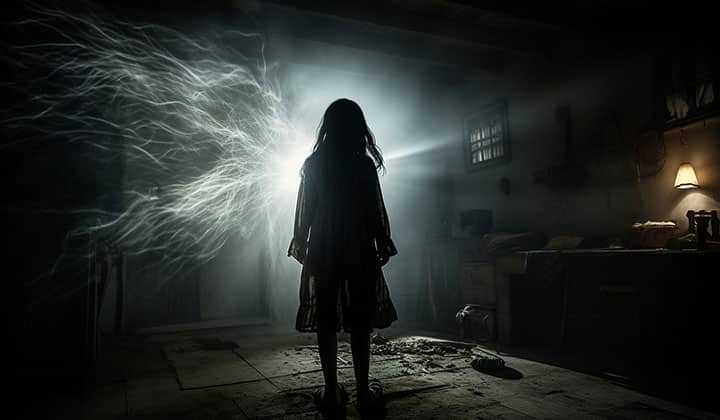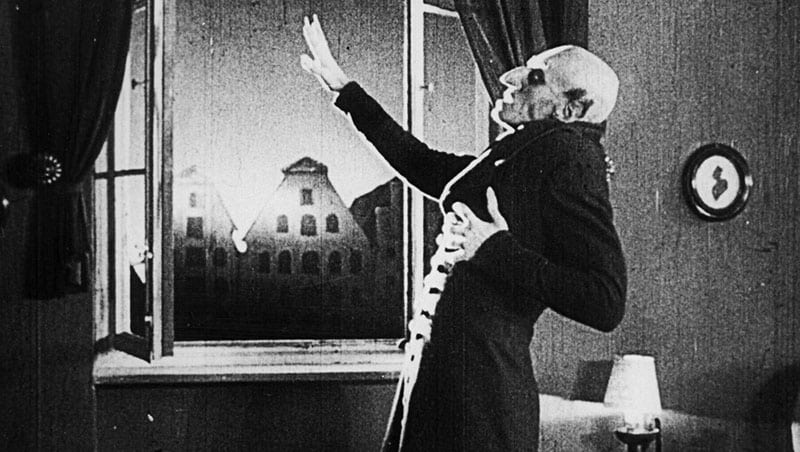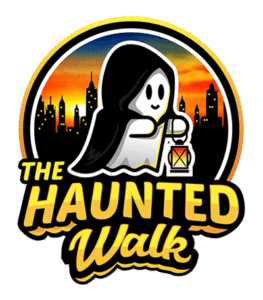
There are a lot of people who are scared of the dark. As Haunted Walk storytellers, we often use this to our advantage: taking guests down into spooky dark tunnels, leading tours late into the evening, wearing dark cloaks and carrying lanterns. However, there are moments when the dread of bright light surpasses our apprehension of the dark. In this article, we will delve into several instances that might make you reconsider your desire to keep the lights on.
Light Phobias & Sensitivities

You find yourself meticulously applying sunscreen, donning long sleeves even in the scorching summer heat, and hiding behind your darkest sunglasses. Does this sound like something out of a vampire story? While it might seem fantastical, this experience is all too real for some. These individuals suffer from heliophobia, a fear of sunlight or extremely bright light. For them, exposure to intense light can trigger severe anxiety, avoidance behaviours, and even panic attacks. To manage this fear, those with heliophobia may resort to extreme measures, such as installing blackout curtains, scheduling activities for later in the day or on cloudy days, or wearing excessively warm clothing to shield themselves from the light.
Now, imagine you’ve gone to the optometrist. They’ve given you drops to dilate your pupils and check the health of your eyes. You say goodbye and head outside into the overwhelming brightness of the day. Luckily for you, you know this will fade. People who experience photophobia experience discomfort or pain when exposed to various levels of light, ranging from natural sunlight to artificial indoor lighting. It is not a phobia, in the psychological sense, but rather a sensitivity that can often be traced to underlying health conditions. For example, many of us have had the experience of being photophobic as a result of a migraine or intense headache. Injury or trauma to the eyes, certain medications, and infections can all make us extremely sensitive to light.
While both of these conditions are not often spoken about, they are still valid. Treat your light-fearing or light-sensitive friends with respect and support; we all have fears that might seem strange to others, but are very real to us!
Glowing Orbs
 In some of our most spine-tingling Haunted Walk stories, we explore not only the mysteries concealed in darkness but also the chilling encounters that occur when darkness reveals more than meets the eye.
In some of our most spine-tingling Haunted Walk stories, we explore not only the mysteries concealed in darkness but also the chilling encounters that occur when darkness reveals more than meets the eye.
Fort Henry National Historic Site, described by the Ghost Hunters as “the most haunted place in Canada”, is one site that has been home to some spooky orb sightings. Here we mean actual sightings, rather than the orbs captured in photographs which tend to have non-supernatural explanations. According to Haunted Rooms, orbs are said to appear as a “manifestation of energy”, which is why they have been associated with the spirit world. Different colours of orbs are also said to mean different things. White orbs, for one, can mean that a spirit is trapped in a place where it doesn’t belong. Blue orbs can indicate that there is a calming spirit in the room. Both white and blue orbs have been sighted at Fort Henry, with white orbs being spotted in the dry ditch and white and blue orbs being spotted in the officers’ guardroom. While Fort Henry never saw any battle, it did see its fair share of deaths due to – of all things – accidents involving military training and weaponry. Both of these orb sightings have ties to locations at which prominent Fort Henry figures lived and died, and so it is thought that perhaps these orbs are indeed tied to spiritual energies. If you aren’t afraid of the light, be sure to join us on our ghost tours of Fort Henry to see if you can spot some spooktacular orbs!
Ghost Tours & Paranormal Adventures
Deer in the Headlights
You’re walking down a darkened path, not a streetlight in sight. You can feel your pupils dilating, struggling to pull in any visible speck of light amidst the suffocating darkness. Suddenly, you hear a rushing sound in the distance. A single car rips down the road, its high beams flooding your vision. Blinded by the lights, you feel paralyzed. You can’t stay where you are, but you can’t see well enough to know where to move. As the light gets brighter and brighter, you feel the fear grow into a kind of decision paralysis…
This is known as the Deer in the Headlights phenomenon. Deer are crepuscular creatures, meaning that they are most active around twilight. Because of this, their vision is adjusted for darkness. Their pupils dilate to take in the maximum amount of light from the surrounding area. When headlights suddenly rush toward them, they freeze, because such light completely floods their vision. Of course, this kind of phenomenon can occur in humans as well as deer. Any stimulus (unexpected lights, paranormal sightings, even seeing a celebrity in person that causes a person to exhibit an intense freeze response can cause the phenomenon).
Cinematic Fear of Light
We all remember the famous line from 1982’s Poltergeist: “Do not go into the light!” Light, especially when contrasted with darkened surroundings, can become a temptation. Characters behave in ways that are out of nature as they are hypnotized by this blinding force of light. This terror of light is shown in the short film Moonstruck (2023) when a woman is forced to hide with her daughter after her husband is tempted by the glowing aura of an infected moon. The entire film is shot in very low light so that the viewer can understand the allure of the bright white moon against a sea of darkness. The poisonous temptation of looking at the moon soon becomes apparent when a sea of the woman’s neighbours, staring eerily off into the distance, snap their heads towards the viewer to reveal eerily glowing eyes.
In this short film, the fear of the light is not so much the light itself, but the implications of temptation and the consequences that arise from being tempted beyond your control. However, in the horror film Midsommar (2019), light is used instead as an endless spotlight on the characters, a device that YouTuber FilmComicsExplained described as “daylight horror.” The movie is set under what is known as the “Midnight Sun”: a circumstance that occurs in some geographical regions south of the Antarctic Circle and north of the Arctic Circle during the summer months. As it sounds, Midnight Sun – or Polar Day – occurs when the sun is visible for 24 hours, meaning that even when the clock strikes midnight, it can still be as bright as it was during the day. American movies often use the midnight sun to indicate an unnatural or unsettling environment. Midsommar shows the American characters feeling ill at ease with the midnight sun, a feeling which eventually pays off as the plot speeds to gore and terror at (mostly) the Americans’ expense. The movie Insomnia (2002) also uses the midnight sun to cause emotional terror at the characters’ expense, as Al Pacino’s character suffers from – you guessed it – insomnia, in large part due to the constant daylight. In this case, it’s possible the character may have preferred the comfort of darkness to the ever-presence of light.
We’ve explored how, at times, the light can be more frightening than the dark. Conditions like photophobia can turn everyday light into a source of discomfort and distress. The mysterious phenomenon of light orbs can trigger fear of the unexplained, even in well-lit surroundings. The “Deer in Headlights” phenomenon shows how sudden, blinding light can paralyze us with fear. And finally, Hollywood’s use of brightly lit settings in horror movies challenges our expectations, reminding us that the eerie and unsettling can lurk where we least expect it. These examples serve as a reminder that fear can manifest in the most unexpected places, and our perceptions of light and dark are not always as they seem. So, the next time you find yourself fearing the dark, remember that sometimes, the brightest lights can cast the darkest shadows on our imagination.
Written and Researched By:
Abbey Lee Hallett (Haunted Walk Tour Guide)
